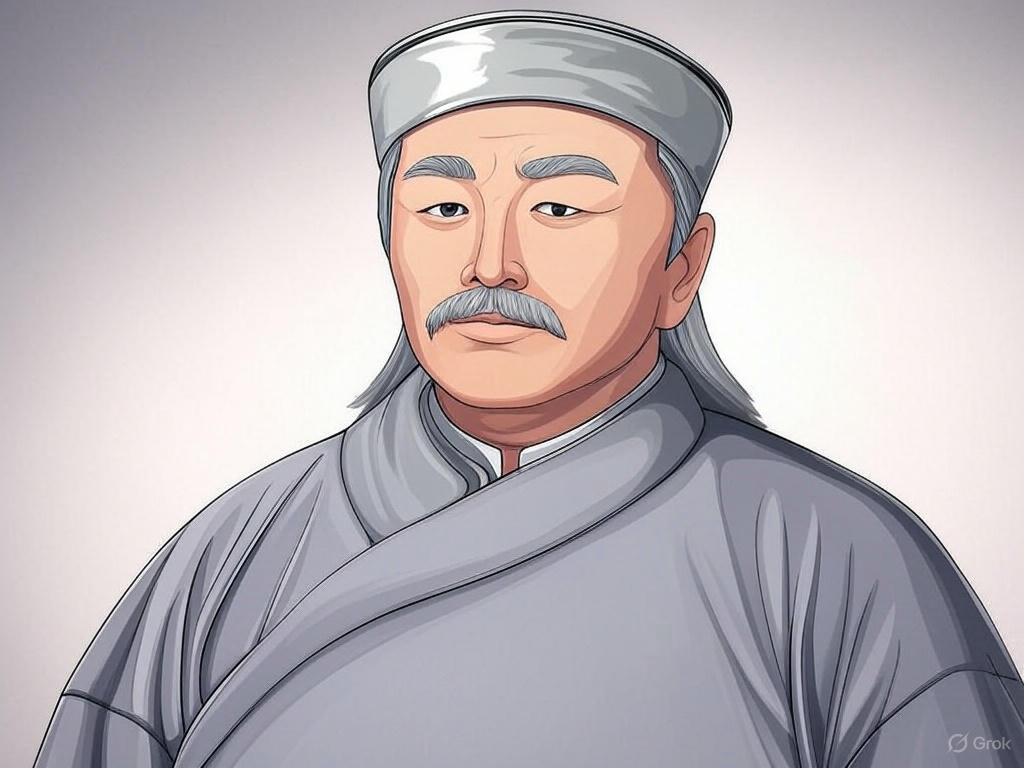Genghis Khan Habits Military and Governance
Genghis Khan's Habits: A Blueprint for Empire
Genghis Khan, a name synonymous with conquest and empire, was not merely a brutal warlord but a shrewd strategist and innovator. His enduring legacy stems from a set of carefully cultivated habits that transformed a fragmented nomadic society into the largest contiguous land empire in history. These habits, spanning military organization, governance, and resource management, offer profound insights into effective leadership and strategic execution.
These practices were not random acts of genius, but rather deliberate choices that shaped the Mongol war machine and administrative system. From fostering loyalty through equitable plunder distribution to ensuring rapid communication via the Yam courier network, each habit played a crucial role in the empire's success. Understanding these core routines reveals the underlying principles of Genghis Khan's remarkable achievements.
- Military Organization and Discipline
- Strategic Communication and Logistics
- Adaptable Governance and Tolerance
- Resource Management and Sustainability
Delve into the habits of Genghis Khan to unlock the secrets behind his unparalleled military and political achievements, and discover timeless lessons in leadership and strategy.
Filter Habits
 Genghis Khan's Habit Sets
Genghis Khan's Habit Sets

Enforce seasonal hunting bans
Prohibited hunting specific game from March to October to preserve breeding stocks and maintain ecological balance. Required binding and heart-removal techniques for slaughtered animals to comply with spiritual practices.
Why This Matters
Genghis Khan implemented these bans through the Yassa code to ensure sustainable resources for his army and subjects. This habit supported long-term military campaigns by preserving meat supplies and aligning with Mongol spiritual beliefs about animal souls[1][3].

Organize decimal army units
Structured troops in groups of 10 (arban), 100 (zuun), 1,000 (mingghan), and 10,000 (tumen) for rapid mobilization. Maintained separate day/night imperial guards (keshig).
Why This Matters
This habit allowed Genghis Khan to scale military operations efficiently. The system enabled precise command structures and quick replacement of fallen leaders[3][6].

Conduct mass winter hunts
Organized large-scale communal hunts (nerge) annually to train troops in coordination and discipline. Participants encircled game over vast distances using flags and horns.
Why This Matters
Genghis Khan used these hunts as military exercises simulating battlefield maneuvers. The practice honed skills in communication, endurance, and unit tactics[3][7].

Promote religious tolerance
Exempted clergy from taxes and conscription regardless of faith. Consulted leaders from Buddhism, Islam, Christianity, and Taoism on governance matters.
Why This Matters
Genghis Khan leveraged this habit to stabilize conquered territories. By respecting local beliefs, he reduced rebellions and gained diverse administrative expertise[2][5].

Establish Yam courier network
Created a postal relay system with waystations every 20-30 miles. Riders carried paiza identification tablets to requisition fresh horses and supplies.
Why This Matters
Genghis Khan needed rapid intelligence sharing across his empire. The Yam allowed him to coordinate military campaigns and monitor regional governors[5][6].

Execute river diversion tactics
Redirected waterways during sieges to flood defenses or create crossing points. Used frozen rivers as highways for winter campaigns.
Why This Matters
Genghis Khan exploited hydrographic features to overcome fortified cities. This habit demonstrated his adaptability to environmental conditions[3][6].

Enforce spoken-word contracts
Considered verbal agreements legally binding unless proven false. Required in-person testimony from witnesses or confessions for convictions.
Why This Matters
In a largely illiterate society, Genghis Khan relied on oral accountability. This habit maintained social order without written records[1][7].

Standardize siege weapon designs
Captured engineers to build standardized catapults and trebuchets. Transported disassembled siege towers by camel caravan.
Why This Matters
Genghis Khan recognized the need for specialized weapons against walled cities. This habit enabled conquest of previously impregnable fortresses[3][7].

Mandate universal military service
Required all free males aged 15-70 to enlist during wartime. Exemptions only for priests, doctors, and grave washers.
Why This Matters
Genghis Khan needed maximum manpower for multi-front wars. This habit turned Mongolia's nomadic population into a standing army[1][6].

Practice strategic betrothals
Married daughters to allied leaders' sons to cement political bonds. Required sons-in-law to fight in vanguard units as loyalty tests.
Why This Matters
Genghis Khan used marriage alliances to control subordinate nations. This habit expanded influence without direct warfare[4][6].

Implement crossbow signaling
Used whistling arrowheads to transmit commands during battles. Different tones indicated advance, retreat, or regroup orders.
Why This Matters
In loud battlefields, Genghis Khan needed reliable communication. This acoustic system worked beyond visual range[7][8].

Require officer literacy
Ordered adoption of Uyghur script for military records. Made tribal leaders' children learn writing as hostages in the keshig.
Why This Matters
Genghis Khan needed accurate record-keeping for his vast empire. Literacy habits enabled standardized laws and supply logistics[3][5].

Pioneer germ warfare
Catapulted plague victims' corpses over city walls. Poisoned water sources with diseased animals during sieges.
Why This Matters
Genghis Khan used biological tactics to demoralize enemies. This habit accelerated surrenders without direct assaults[5][7].

Enforce uniform equipment
Standardized saddle designs, arrowhead weights, and armor materials. Required soldiers to maintain their own gear.
Why This Matters
Genghis Khan needed interchangeable equipment for battlefield repairs. Standardization habits improved supply efficiency[3][7].

Burn conquered leaders' homes
Destroyed palaces and administrative centers after victories. Built new capitals on adjacent sites using slave labor.
Why This Matters
Genghis Khan symbolically erased previous regimes. This habit prevented sentimental attachments to old power structures[5][6].

Mandate mobile governance
Conducted imperial business from large yurt complexes. Moved capital locations seasonally with grazing patterns.
Why This Matters
Genghis Khan maintained nomadic traditions to stay connected with troops. Mobile habits prevented bureaucratic stagnation[6][8].

Reward enemy informants
Granted wealth and titles to defectors providing military intelligence. Executed returned escapees to discourage espionage.
Why This Matters
Genghis Khan exploited internal enemy divisions. This habit created self-sustaining networks of informers[5][7].

Host multi-day strategic councils
Convened fortnightly meetings with generals in a ceremonial yurt. Required attendance under penalty of death for absence.
Why This Matters
Genghis Khan valued collaborative military planning. This habit ensured unified execution of complex campaigns[6][7].

Ban private wealth accumulation
Prohibited officers from amassing personal herds exceeding 1,000 head. Redistributed excess livestock to recruits' families.
Why This Matters
Genghis Khan prevented economic disparities that could fuel rebellions. This habit maintained troop morale and loyalty[1][3].
Key Takeaways for Modern Leadership
Genghis Khan's habits, though rooted in a vastly different era, offer surprisingly relevant lessons for contemporary leadership and strategic thinking. By examining the core principles behind these practices, we can identify valuable takeaways applicable across various fields.
- Prioritize Sustainable Resources: Enforce seasonal bans and manage resources for long-term stability, mirroring modern sustainability principles.
- Foster Equity and Loyalty: Share rewards equitably to build team cohesion and loyalty, crucial for any organization's success.
- Embrace Scalable Structures: Organize teams into modular units for rapid scaling and efficient operations, a key aspect of modern agile methodologies.
- Value Practical Training: Use real-world exercises to hone skills and improve coordination, emphasizing the importance of hands-on experience.
- Promote Inclusivity and Diversity: Cultivate tolerance and leverage diverse expertise for broader perspectives and reduced internal conflict.
- Invest in Rapid Communication: Establish efficient communication networks for swift information dissemination and coordinated action, vital in today's fast-paced world.
- Adapt to Circumstances: Exploit environmental conditions and adapt strategies to overcome challenges, highlighting the importance of flexibility and resourcefulness.
- Uphold Accountability: Emphasize verbal agreements and personal responsibility to maintain order and trust, reinforcing the value of integrity.
- Standardize for Efficiency: Standardize processes and equipment for improved efficiency and interoperability, a cornerstone of operational excellence.
- Maximize Human Potential: Mobilize all available talent and resources to achieve ambitious goals, reflecting the power of collective effort.
- Build Strategic Alliances: Utilize partnerships and alliances to expand influence and achieve objectives, showcasing the strength of collaboration.
- Leverage Innovative Communication: Implement creative communication methods to overcome limitations, highlighting the need for innovative solutions.
- Embrace Knowledge and Record-Keeping: Prioritize literacy and accurate records for informed decision-making and standardized operations, emphasizing data-driven strategies.
- Employ Psychological Strategies: Utilize unconventional tactics to gain a strategic advantage and demoralize opponents, acknowledging the psychological dimension of competition.
- Maintain Uniform Standards: Enforce consistent standards across operations for quality and reliability, underscoring the importance of quality control.
- Break from the Past: Be willing to dismantle outdated systems and structures to pave the way for new paradigms, promoting the need for disruptive innovation.
- Maintain Mobility and Agility: Adopt flexible and mobile operational models to adapt to changing environments, showcasing the value of agility.
- Value Intelligence and Information: Reward information gathering and utilize intelligence networks to gain a competitive edge, emphasizing the power of information.
- Foster Collaborative Planning: Prioritize collaborative strategic planning to ensure unified action and shared vision, highlighting the importance of teamwork.
- Prevent Inequality and Maintain Morale: Address economic disparities and maintain morale to foster loyalty and prevent internal strife, underscoring the importance of employee well-being.
Embrace the wisdom of Genghis Khan's habits – adapt, innovate, and lead with strategic foresight to forge your own path to success.

